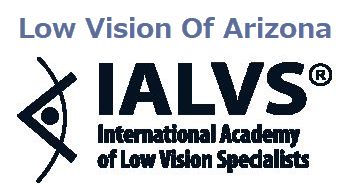Diabetic Retinopathy
What is Diabetic Retinopathy?
Diabetic retinopathy is an eye condition that occurs when the blood vessels in the back of the eye become more abundant, leak fluid, and bleed as a complication of diabetes. The longer a person is diabetic, the higher their chance of developing diabetic retinopathy.
At first, diabetic retinopathy may have no symptoms or cause only mild vision problems. As time goes by, it can potentially lead to vision loss. Fortunately, a low vision eye doctor can maximize your remaining vision in the event of vision loss by providing the most appropriate low vision aids and devices for your condition and lifestyle needs.
Because the early stages of this condition may not produce any symptoms, it is vital for patients with type 1 or type 2 diabetes to undergo regular comprehensive dilated eye exams in order to accurately diagnose diabetic retinopathy. If you or a loved one has been diagnosed with diabtic retinopathy, contact Dr. Paul Woolf, who will help you function more independently and get back to doing the things you love to do.
What Are Symptoms of Diabetic Retinopathy?
There are two stages of diabetic retinopathy: non-proliferative and proliferative retinopathy. In the early, non-proliferative stages, symptoms may be very minimal or non-existent.
In proliferative retinopathy, there may be noticeable vision changes that can indicate significant deterioration of eye health, such as diabetic macular edema, the swelling of the macula and the most common cause of vision loss in those with diabetic retinopathy. Some of these symptoms include:
- Vision loss
- Empty or dark areas in your vision
- Fluctuating vision
- Spots or dark strings floating in your vision (floaters)
- Blurred vision
- Impaired color vision

What Causes Diabetic Retinopathy?
When blood sugar levels run too high, small blood vessels throughout the body can become damaged, including the blood vessels in the retina (the light-sensitive lining in the back of the eye). The sugar in the blood blocks the blood cells from passing through the tiny blood vessels in the eye, causing them to leak fluid or bleed. The body then regenerates new blood vessels to compensate for the damaged ones in a process called "proliferation," but these new blood vessels may also bleed or leak easily.


Who Is at Risk of Developing Diabetic Retinopathy?
There are several risk factors that can heighten one's risk of developing diabetic retinopathy:
- Being of African-American, Hispanic, or Native American descent
- Duration of diabetes
- Poor control of blood sugar levels
- High blood pressure
- High cholesterol
- Being pregnant
- Tobacco smoking
It's important to note that not all diabetics develop diabetic retinopathy. In the event that you are diagnosed with diabetic retinopathy, please don't lose hope. A low vision doctor can maximize your remaining functional vision through the use of low vision aids.
How A Low Vision Optometrist Can Help
Low vision eye doctors can maximize the patients' usable vision through a variety of low vision glasses, devices, aids and advanced technology, often enabling them to once again drive, read, and engage in other vision-dependent activities.
Injections and medications have also been shown to help patients do the things they love and regain their independence. For example, among the effective treatment options is the Anti-VEGF (Anti-vascular endothelial growth factor), a drug that is injected into the eye to help prevent new blood vessels from forming in the retina.
In more severe cases of diabetic retinopathy, the low vision eye doctor will refer the patient to a surgeon for a laser treatment (photocoagulation) to seal the leaks of the damaged blood vessels.
Dr. Paul Woolf and the entire staff at Low Vision of Arizona recognize and understand the challenges that accompany vision loss. Dr. Paul Woolf provides the tools needed to fully understand the condition and will work with the patient to determine the next step in improving usable vision. If you or a loved one have been diagnosed with diabetic retinopathy, call to schedule your appointment today - we're here for you.
- Despite their vision loss, patients with diabetic retinopathy can still enjoy watching TV with the use of low vision aids and devices.
- Having diabetic retinopathy doesn’t mean you have to turn in your smartphone. Here’s how someone with impaired vision can still use their android or iPhone.
